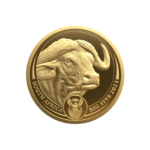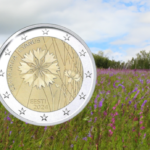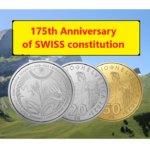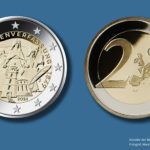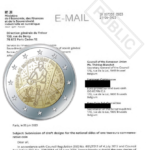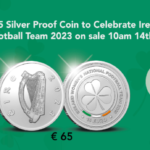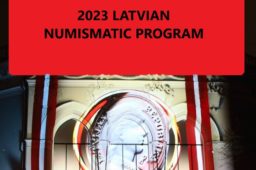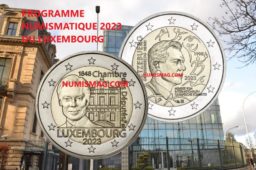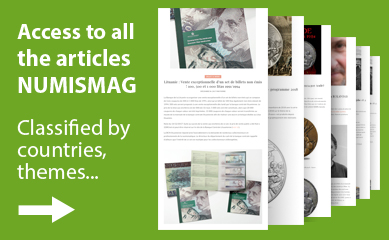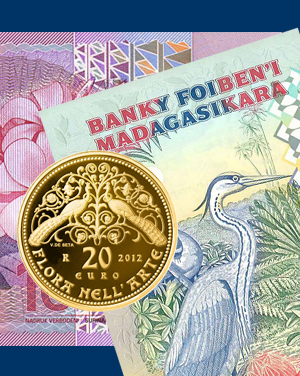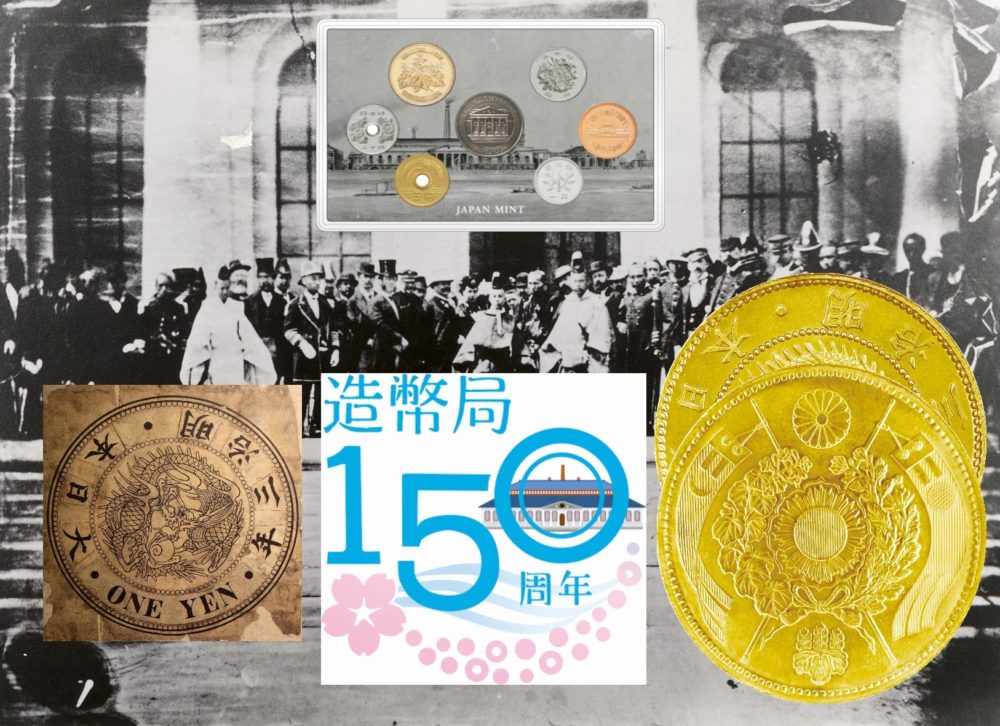
In 2021 Japan Mint Celebrates its 150th anniversary
- September 06, 2021
- by
- Pierre

In 2021, the Japan Mint celebrates its 150th anniversary. This is the opportunity for NUMISMAG to ask some questions to the Japan Mint related to its history. The actual Japan Mint was founded in late 19th century with the help of foreign ingeniors. KANO Natsuo, father of first modern japanese coinages, was held as a great artist and worked for the mint during that period, a very mooving and rich period for numismatics of Japan.
NUMISMAG: Which event was the origin of Japan Mint foundation (advent of the MEIJI era)?
JAPAN MINT: At the end of the Edo period (1603 – 1868), Japan’s monetary system reached a state of extreme confusion because of the shogunate’s frequent degrading and recasting of coinage, the issuing by domains of their own currency and currency only circulated within the territories, and the circulation of counterfeit money and private coinage.
As a result, commerce was hampered, and prices were unstable and rising, and this ultimately led to poverty among the people.

Inauguration ceremony – april 4th 1871
The new government formed by the Meiji Restoration keenly realized that it was essential for a modern unified nation to establish the coinage system and fix the bad economy, in 1868, the government decided to construct a minting factory with Western-style equipment and to produce coins comparable to those of developed countries.
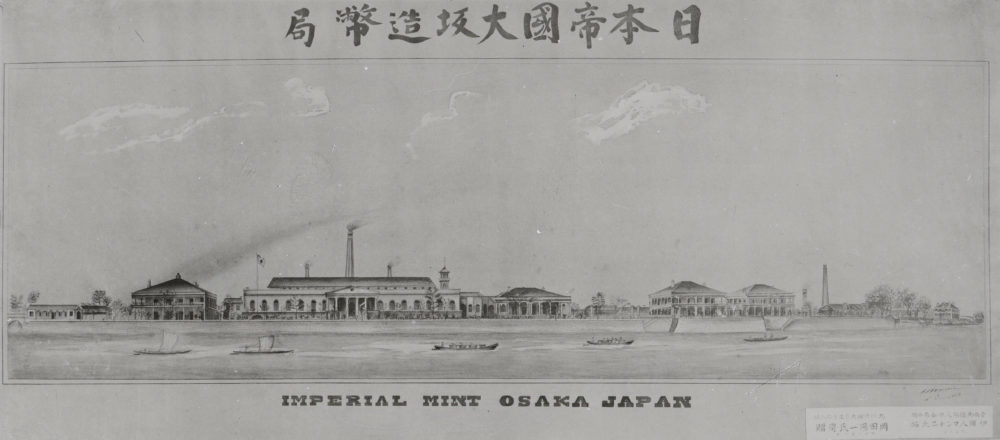
Japan Mint at time of the establishement
NUMISMAG: Who was the first master engraver of the Japan Mint and what was his story (KANO Natsuo)?
JAPAN MINT: KANO Natsuo is an engraver born in Kyoto, who has engraved the metal fittings of the Emperor Meiji’s long sword. In 1869, KANO started to work for the Japan Mint and was ordered to create a sample of a new coinage and he was engaged in its design and metal engraving.
It is said that his brilliant skill won the admiration of the foreign engineers employed by the Mint at the time. At first, the order for die making work was placed with the United Kingdom. However, the finished dies were too poor quality for practical use, so KANO had to repair them beforehand. After that, all of the design and engraving of coinage in the Meiji period was performed by KANO and his followers. After retiring from the Mint in 1875, KANO lectured at the Tokyo Fine Arts School (currently Tokyo University of the Arts).

KANO Natsuo, first engraver in chief of Japan Mint

The “one Yen” coin designed by KANO, first MEIJI coinage
NUMISMAG: Was the Japan Mint helped by foreign countries at the beginning (story of Thomas James Waters)? Which ones and in which field (tools – minting technique – engraving)?
JAPAN MINT: In the early days of the Mint, a total of 31 foreign workers including Waters were employed to give technical instruction on coin production and organization management. Under this instruction, the Japanese staff acquired advanced technical skills.
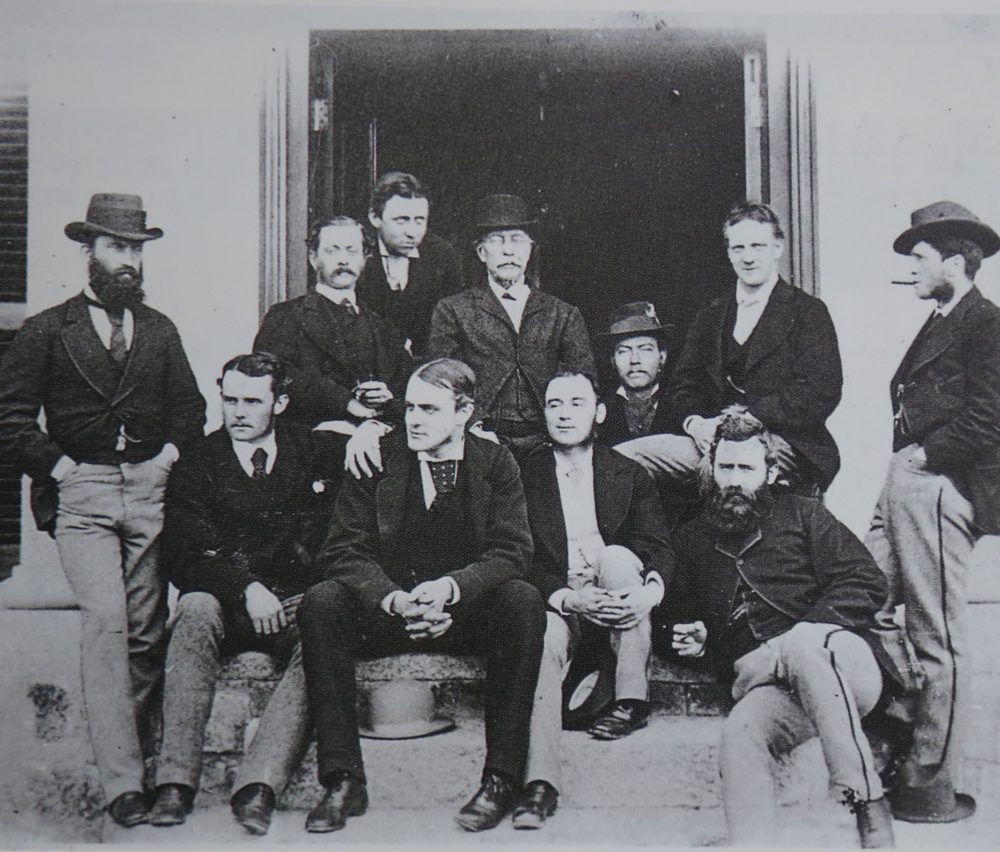
Thomas James Waters
Among the foreign staff, major figures are as follows. An Irish construction engineer Thomas James Waters was employed to design and supervise the construction of a modern minting factory in 1868. Although building materials such as brick were not available in Japan at the time but which were necessary for Western-style refractory construction, Waters overcame the difficulties of material procurement by building furnaces in Sakai city, Osaka and Hiroshima city, and teaching the local people how to manufacture bricks, and he successfully completed this large project.

Thomas William Kinder
A British man Kinder was employed in 1869 and worked on the construction of the factory, the installation of machinery and supervision daily work as the Director of the Mint, which was great achievement. However, his arrogant manner and personality caused constant conflicts with other staff and that gave rise to a movement aiming at self-management of the Mint, which in the end developed into a boycott directed against Kinder himself. Ultimately Kinder was discharged in 1875.
By the way, his salary was more expensive than that of the Prime Minister of Japan at that time.

Vicente Emilio Braga
Braga was Portuguese, which was unusual as so many foreign employees in the Japan Mint at the time were British. He was trusted by the Director of the Mint Kinder and in 1870 he was employed in order to perform accounting work for the Mint and gave instruction in the first double-entry bookkeeping to be used in Japan.
After his resignation from the Mint In 1875, Braga started to work for the Ministry of Finance of Japan, formulated the government bookkeeping system and resigned from the ministry in 1878. Afterward, he went to live in Kobe, where we worked as Japan’s first Portuguese Consulate.

William Gowland
Gowland, who was a chemist, metallurgist, and analyst, worked for the Mint for a total of 16 years, from 1872 to 1888. He was popular among the staff, who regarded him as a good-natured engineer, and he worked enthusiastically on the production of an English-style reverberatory furnace and the instruction in operating techniques, refining work, and techniques for analyzing bullion and materials.
He was also a mountaineer who earned a place in the history of Japanese mountaineering for his research of ancient tombs and geological surveys and who coined the term “Japan Alps”. After returning to the United Kingdom, Gowland worked as a professor at the Royal School of Mines.

NUMISMAG: What is the first emblematic coin of modern Japanese numismatics (1873 – 1 silver Yen coin)?
JAPAN MINT: Just 150 years ago, in 1871, Japan’s first financial regulation, the New Currency Act, was promulgated and that provided 5 types of gold coins (20 yen, 10 yen, 5 yen, 2 yen and 1 yen) as the standard money, 4 types of silver coins (50 sen, 20 sen, 10 sen, and 5 sen) and 3 types of copper coins (1 sen, 1/2 sen and 1 rin) as the subsidiary money. Also, 1 yen silver coin as the standard money was specified for international trade purpose.
The largest denomination 20 yen gold coin weighed 33.3333 g had a purity of .900 gold (including 30 g of pure gold) and its dimeter was 35.0606 mm. A dragon as a symbol of the Emperor was depicted on the obverse side while the reverse showed an elaborate design composed of a rising sun, a mirror with a frame of eight petals called hachiryokyo, the crest of the chrysanthemum and the paulownia, 2 imperial flags showing sun and moon respectively, and botanical motifs of the chrysanthemum and the paulownia.Just 150 years ago, in 1871, Japan’s first financial regulation, the New Currency Act, was promulgated and that provided 5 types of gold coins (20 yen, 10 yen, 5 yen, 2 yen and 1 yen) as the standard money, 4 types of silver coins (50 sen, 20 sen, 10 sen, and 5 sen) and 3 types of copper coins (1 sen, 1/2 sen and 1 rin) as the subsidiary money. Also, 1 yen silver coin as the standard money was specified for international trade purpose.


20 Yen gold coin
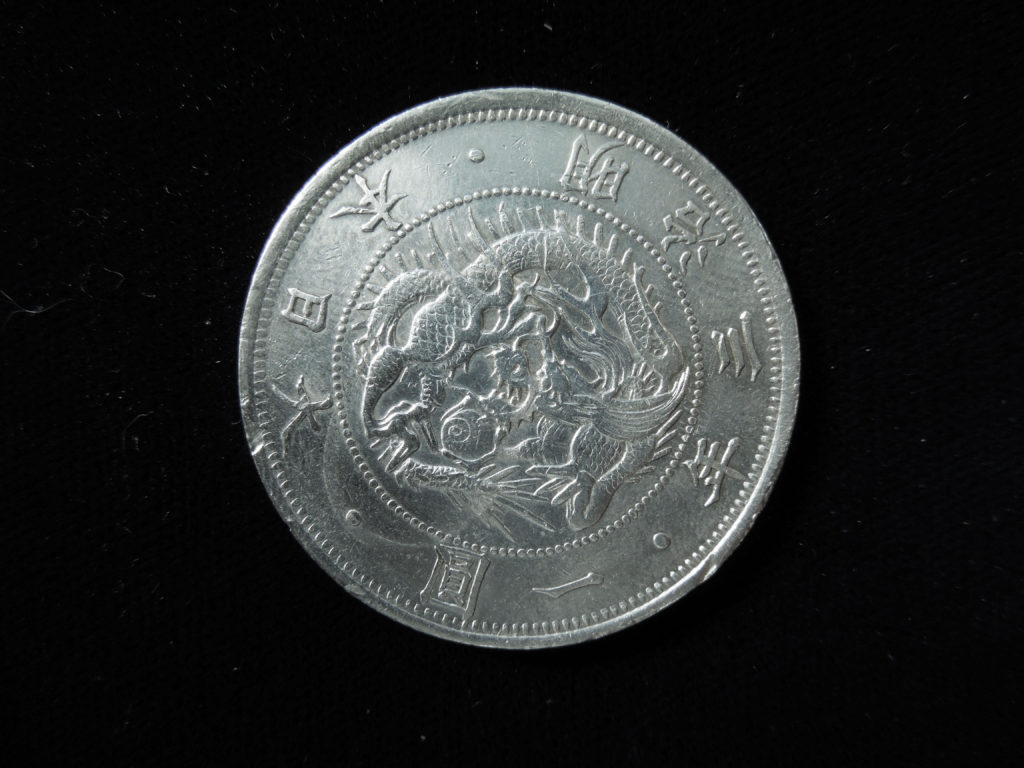

One Yen silver coin – “trade coin”
NUMISMAG: What major reforms has the Japan Mint undergone since its creation, during the last two centuries?.
JAPAN MINT: As a recent example, in 2013, the Japan Mint was transformed from a department of the Ministry of Finance into an institution fully funded by the government called “an incorporated administrative agency,” which requires a system of autonomous management with financially independence. Such a change in the management structure is considered one of the “major reforms.”
But when we look back on our history over the past 2 centuries, we consider that while smoothly transmitting skills and know-how accumulated for years, many minor reforms such as timely innovations and development of the organization frameworks to facilitate the survival of these knowledge is rather essential for the formation of today’s Mint.As a recent example, in 2013, the Japan Mint was transformed from a department of the Ministry of Finance into an institution fully funded by the government called “an incorporated administrative agency,” which requires a system of autonomous management with financially independence. Such a change in the management structure is considered one of the “major reforms.”
NUMISMAG: What is the reason for the creation and the history of the Japan Mint’s branches? Are they each specialized in a different field?
JAPAN MINT: Let’s make the review branch by branch.
1. Saitama Branch
In 1898, the Tokyo sub-branch of the Japan Mint was set up in the building of the Ministry of Finance to purchase gold and silver bullion, but it was temporally abolished in 1907. Later, it was reestablished in Tokyo (Kojimachi-ku) in 1929 and its major operation was fineness certification of precious metal wares. In 1939, it was relocated in another place (Toshima-ku) for expansion and development of the operations; production of orders started in the same year and coinage in 1941. In 1943, it was reformed as the Tokyo branch of the Japan Mint. In October 2016, the Tokyo brunch was moved to the present location in Saitama (Saitama city) and renamed to Saitama brunch.
The current main operations are production of proof coins, manufacture of orders and metallic art objects and fineness certification of precious metal wares. Among them, the last one is only performed in the Saitama branch.
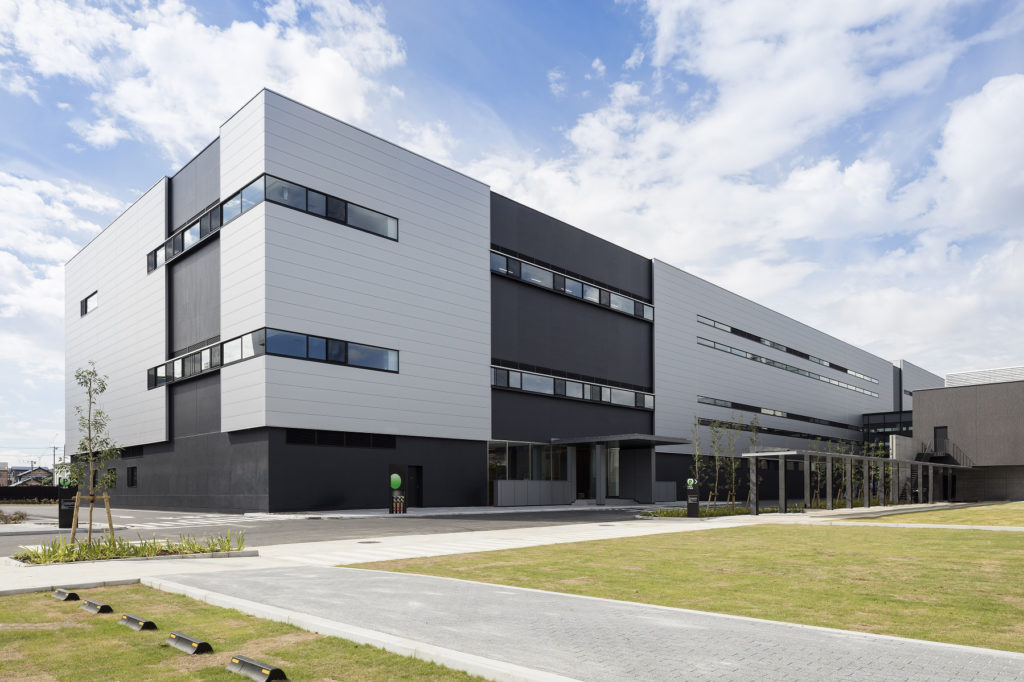
2. Hiroshima Branch
The coin production in the Hiroshima branch was begun at the temporary plant in Hiroshima city in February 1945. Shortly thereafter, due to the damages by the atomic bomb, the production of coins was discontinued. In January 1946, however, it was resumed at the present address (Saeki-ku, Hiroshima city). The Hiroshima brunch has increased its productivity by introduction of new machines and continues the operations to this day.
The current main operations are production of circulating coins and melting of coins. The equipment for melting and rolling of coin materials are stored in the Hiroshima branch only.
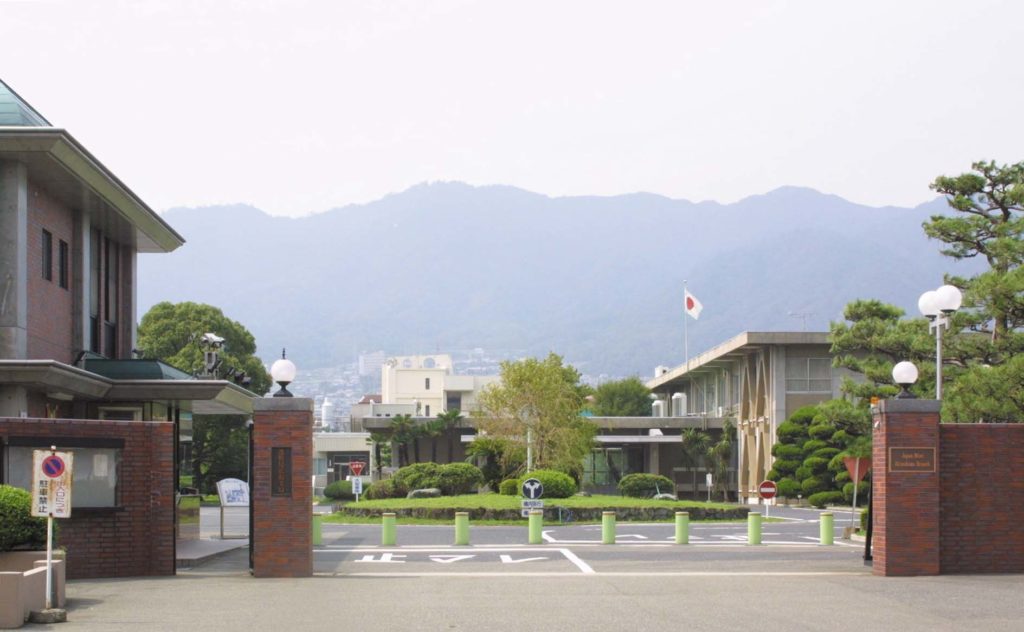
NUMISMAG: The Japan Mint has a museum. How many collector’s items are there in the museum? What are the most important items because of their historical importance? What are the rarest and most valuable items?
JAPAN MINT: The Mint Museum in the Osaka headquarters holds more than 140,000 items and 4,000 of them are displayed.
Examples of the most important exhibits are two coining presses (made by Thonnelier in France and by Uhlhorn in Germany) which were used to produce gold and silver coins at the time of establishment.

The rarest and most valuable exhibits are the takenagashi-kin and the kikukiri-kinjo. These gold bars were unexpectedly picked up by an old man who was digging for freshwater clams in Okawa river running alongside of the Japan Mint. He brought them to the Mint for appraisal and found that they were gold bullions made during 1537 – 1598, when a warrior TOYOTOMI Hideyoshi was in power, and were carried away from Osaka Castle with it fall. Both of the bars were currency valued by weight, which was cut to the necessary size for payment for purchase of weapons such as guns and employment of masterless samurai, and judging from the crest of chrysanthemum, they are considered to be struck by the order of TOYOTOMI Hideyoshi. They are invaluable items stored in Mint Museums in the Osaka headquarters and the Saitama branch only.


NUMISMAG: What are the main themes of the exhibition concerning the 150th anniversary of the creation of the Japan Mint? Where will it take place (+ period and fee entrance)?
JAPAN MINT: The special exhibition for the Japan Mint’s 150th Anniversary is consisted of 3 sessions. It is held in the Mint Museums in the Osaka headquarters and the Saitama branch, and at the Exhibition Room in the Hiroshima branch and there is no charge for admission.
Session 1 “Historic Journey over 1 Yen Coin ~ 150 Years of Progress of the Mint ~”
It features the 1 yen coins issued from the time of the establishment of the Japan Mint to up to date, tracks the changes in their value, materials and designs, looking back on the history of the Mint.
Osaka: – July 11, 2021
Saitama: – June 27, 2021
Hiroshima: – July 9, 2021
Session 2 “Dragon Appears and Rice Plants Ripen ~ Design of Coins over 150 years ~”
It is focus on motifs depicted on the coins by reference to the old designs stored in the Mint.
Osaka: October – December, 2021
Saitama: October – December, 2021
Hiroshima: January – March, 2022
Session 3 “Tales of Times Now Past of Japan Mint ~ Celebrating 150th Anniversary ~”
It provides a wide range of interesting exhibits covering not only the operations but different aspects of the Japan Mint such as lifestyle and culture.
Osaka: January – March, 2022
Saitama: January – March, 2022
Hiroshima: October – December
NUMISMAG: What are the different heraldic signs present on the Japanese coins that refer to the different Emperors of Japan (Mutsuhito period, 1868/1912 – Yoshihito period, 1912/1926 – Hirohito period, 1926/1989 – Akihito period, 1989/2019 – Naruhito period 2019/-)?
JAPAN MINT: The Japanese currency does not have imperial heraldic signs for each Emperor. They have inscriptions of year not as per the Western calendar but the Japanese calendar, which corresponds to the period of reign as follows:
His Majesty the Emperor Mutsuhito (1868 – 1912): Meiji
His Majesty the Emperor Yoshihito (1912 – 1926): Taisho
His Majesty the Emperor Hirohito (1912 – 1989): Showa
His Majesty the Emperor Emeritus Akihito (1989 – 2019): Heisei
His Majesty the Emperor Naruhito (2019 – ): Reiwa
NUMISMAG: For which other countries did the Japan Mint strike coins?
JAPAN MINT: You may refer to the dedicated page on our website.
In addition to the coins on the list, we produced 2 types of silver coins of Imperial Russia and a bronze coin of Siam (present Kingdom of Thailand).
NUMISMAG: Does Japan mint intend in the future to develop new activities (bullion coins market – services to collectors…)?
JAPAN MINT: We would like to put more effort into increasing awareness and sales in international markets of our metallic art objects produced with skilled craftsmanship. For long years, the Japan Mint has produced and released various metallic arts objects, for example, National Treasure series focusing on National Treasure and cultural properties associated therewith, Cherry Blossom Viewing medals with relief of an iconic flower of Japan cherry blossom, cloisonné medals featuring festivals across Japan.
We intend to promote these beautiful metallic art crafts with excellent quality more effectively in our website and Facebook and at the same time, we will increase opportunities for overseas customers to purchase these products by improvement of the online shop, etc.
Also, we hope our customers would feel closer to us, so we are focusing on enhancing public relations on our various activities. This year, we created a YouTube channel (currently only available in Japanese) and already released some videos such as a video showing cherry blossom viewing (the Japan Mint is also famous for is cherry blossoms) and a video on the special exhibition for our 150th anniversary with the explanation by museum curators. We will release various videos on YouTube to make more people get interested in the Japan Min and Japanese currency and our metallic art objects, so please check out our videos on Facebook or Youtube.
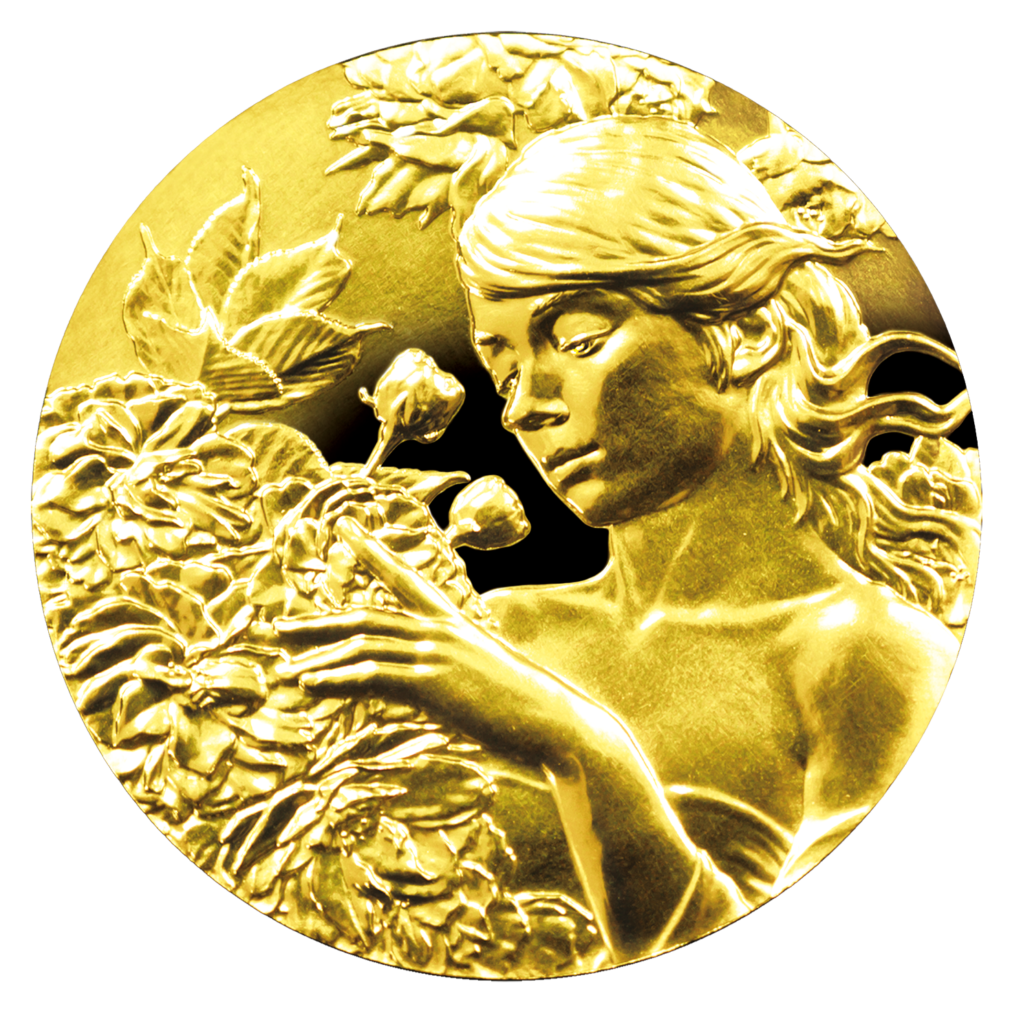
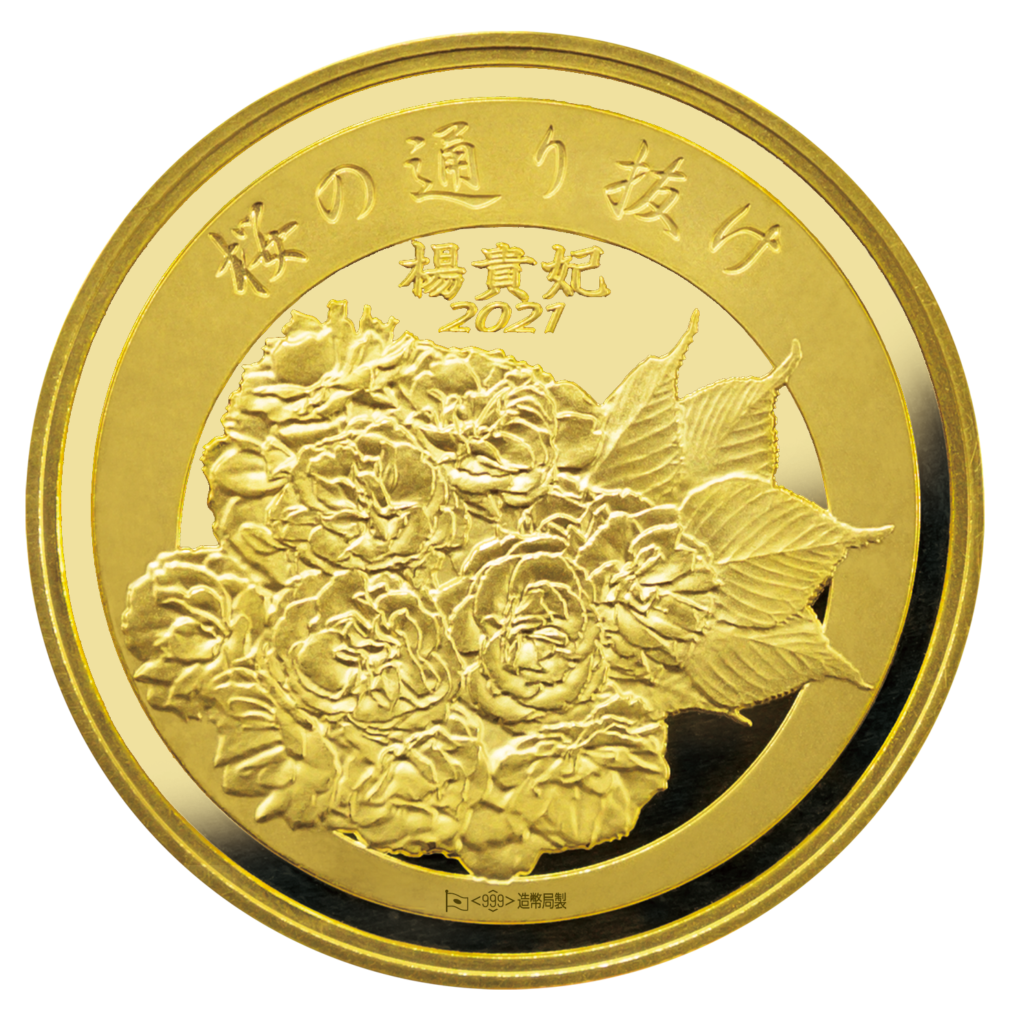
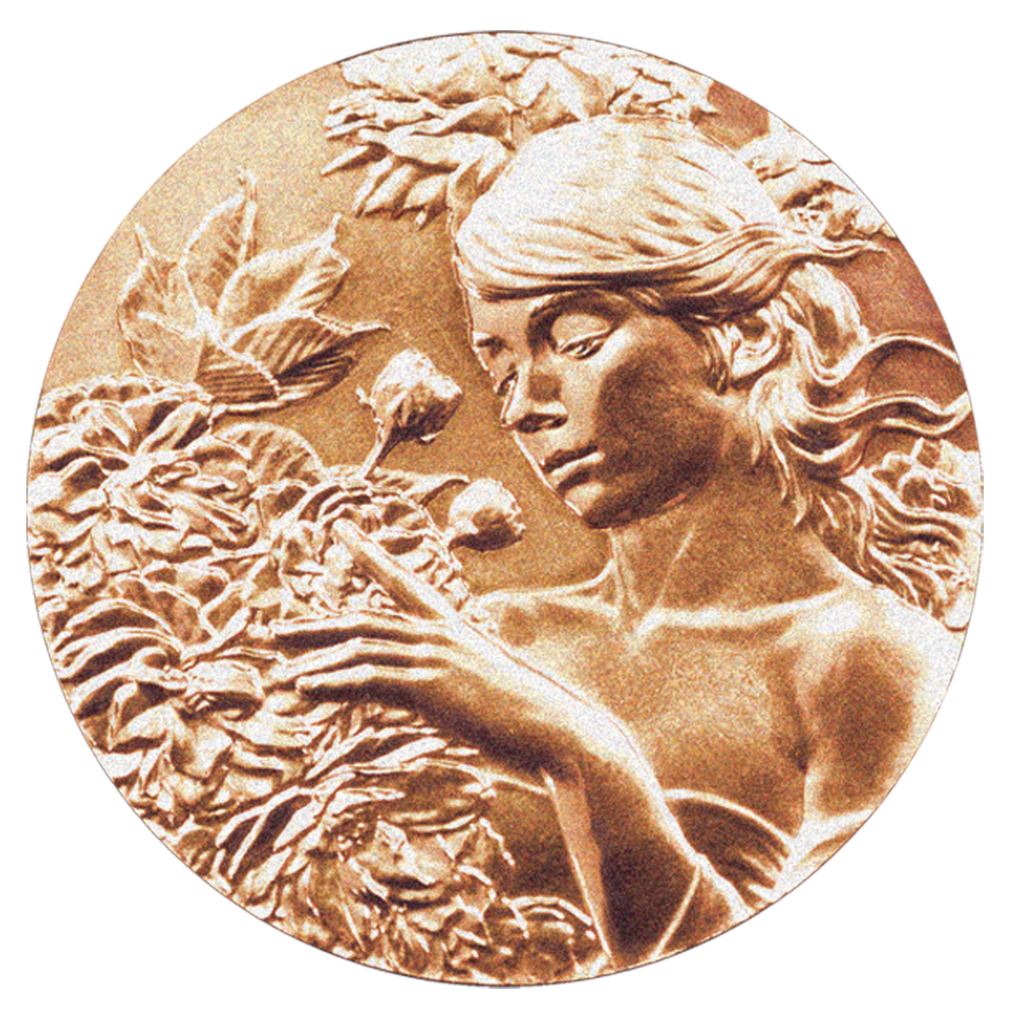
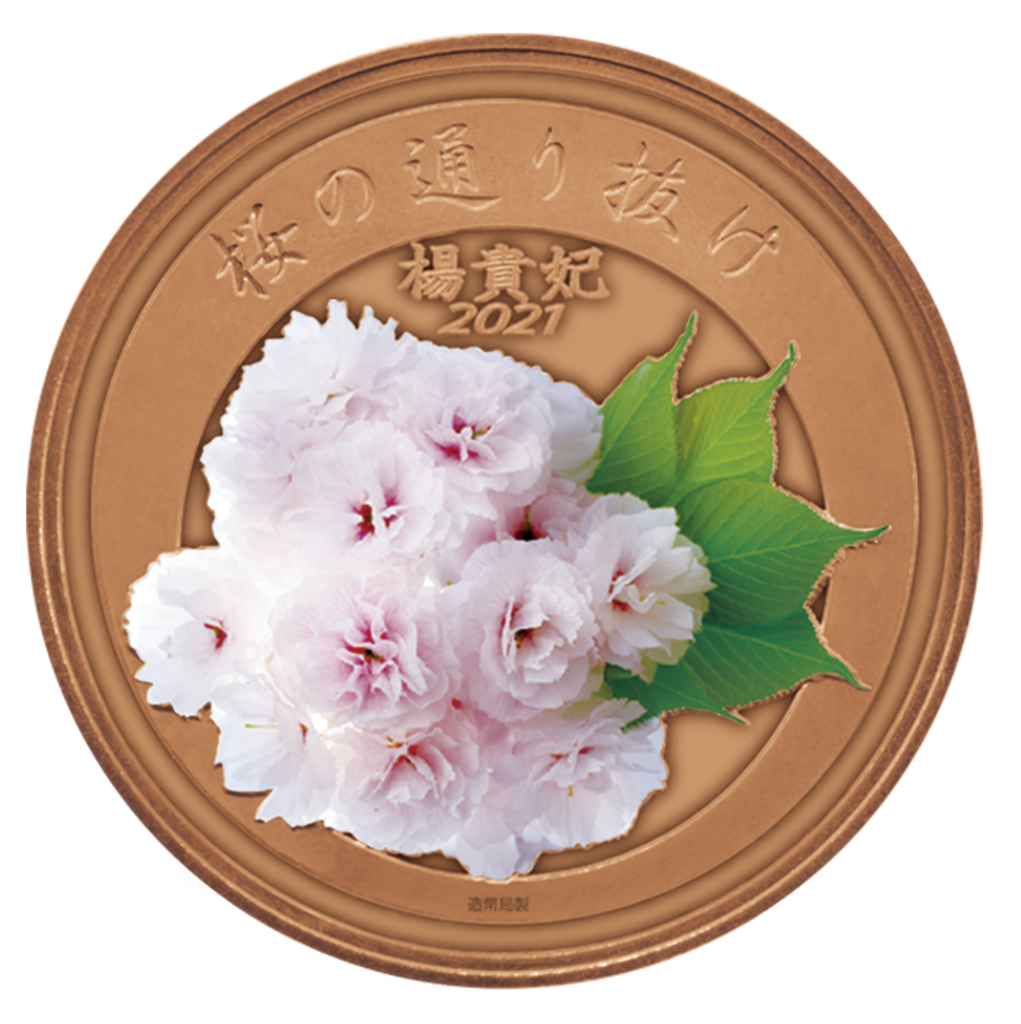

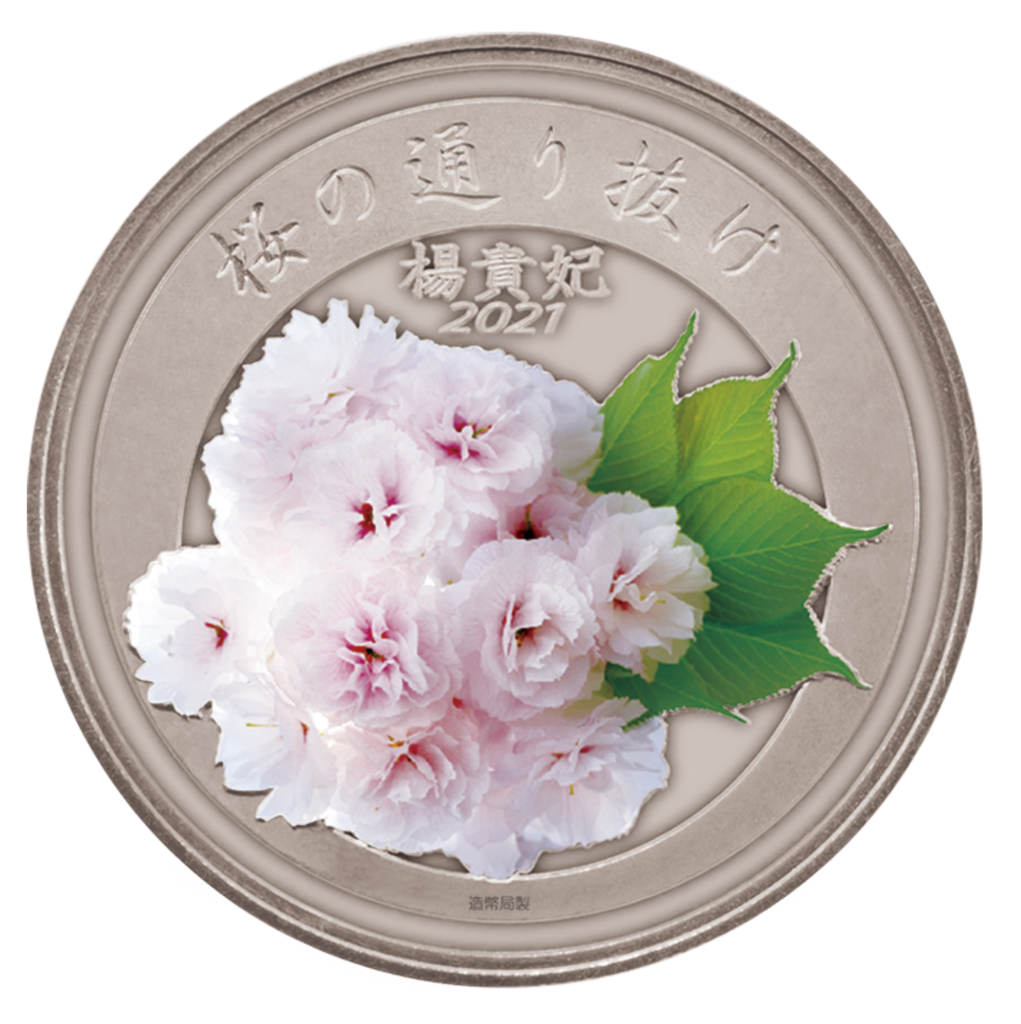
2021 Cherry Blossom medals
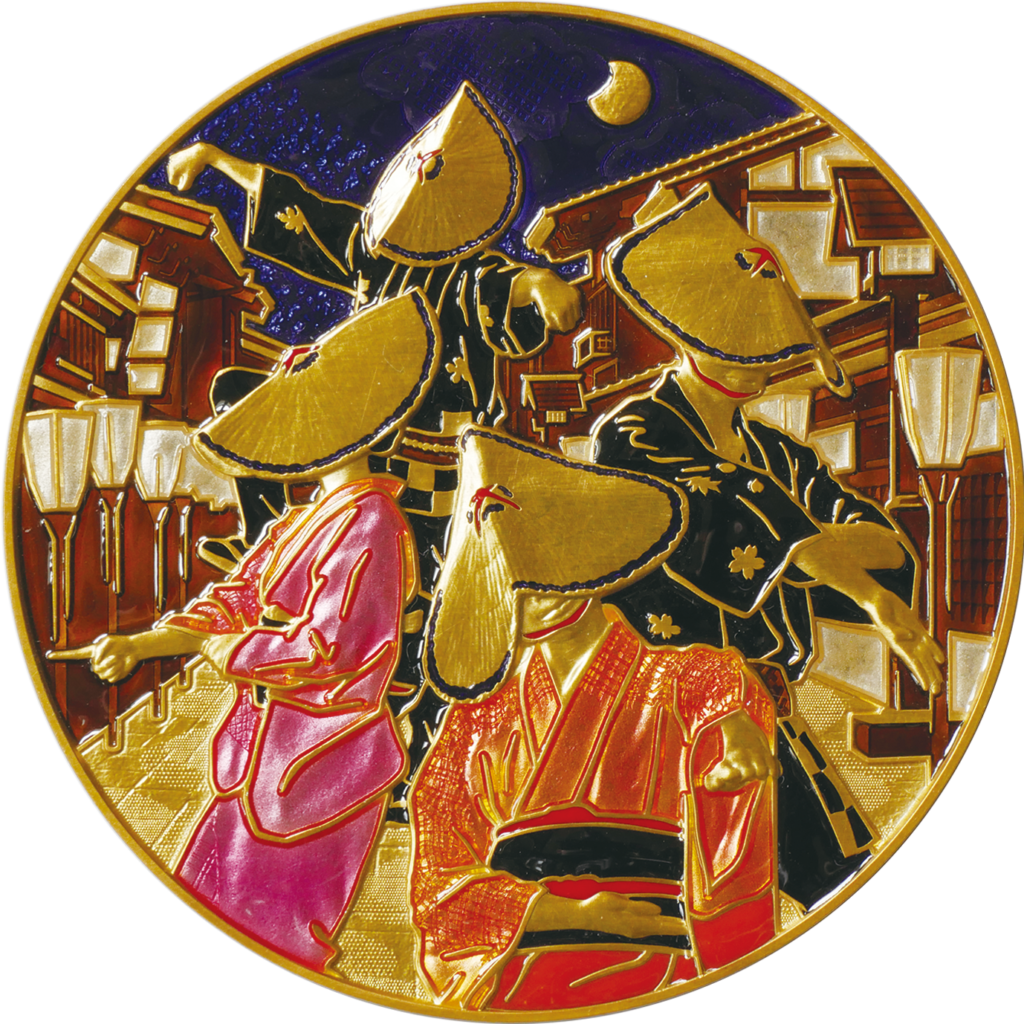
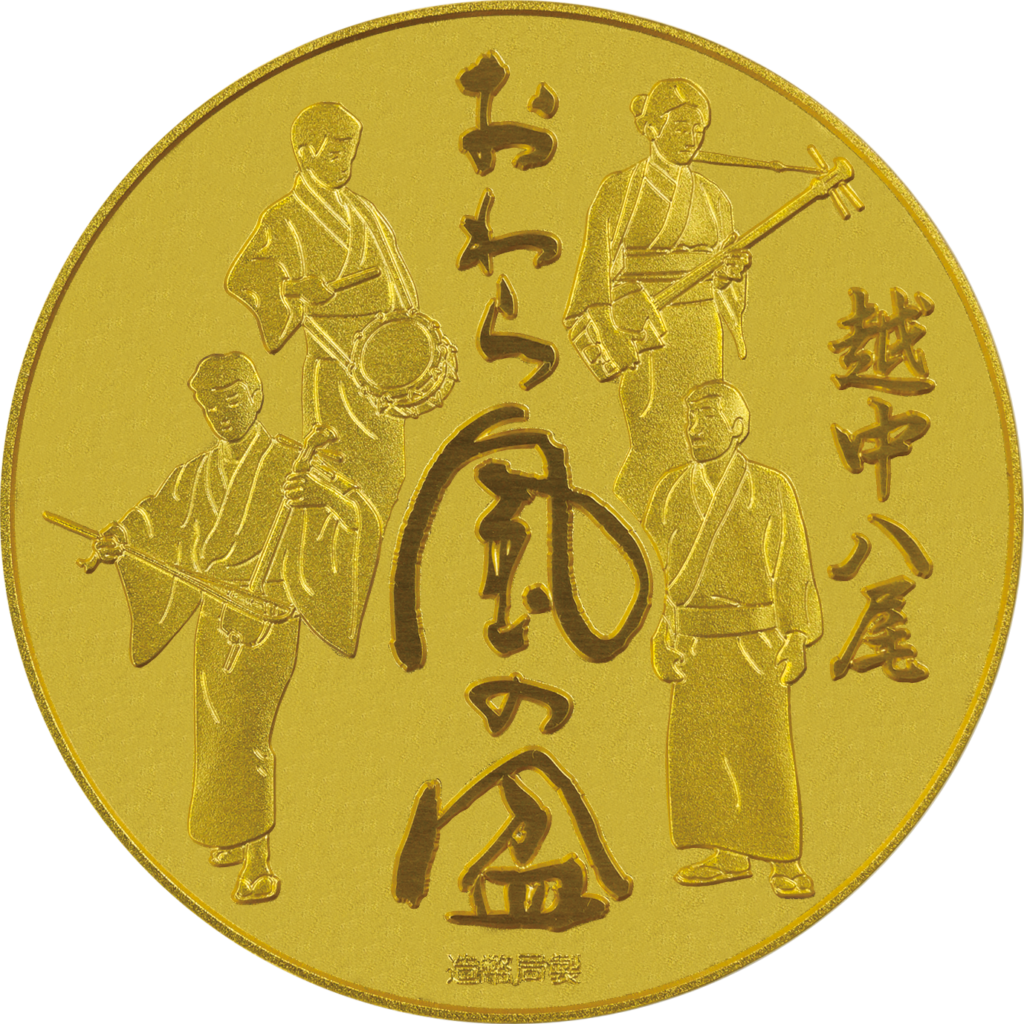
2021 cloisonné medals from Japan Mint
NUMISMAG: Does Japan Mint plans to mint specific coins or sets to commemorate the 150th anniversary?
JAPAN MINT: The Japan Mint released a circulating coin set Brilliant Uncirculated (BU) Coin Set to commemorate the 150th anniversary of the Japan Mint and the birth of the Japanese monetary unit, the “Yen.”
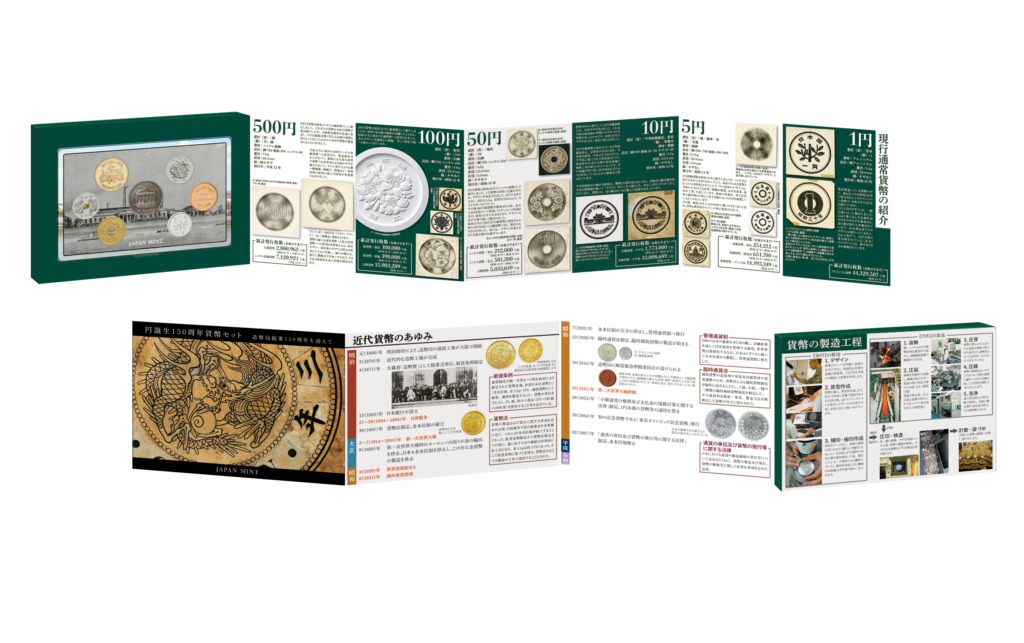
The coin set contains six Japanese legal tender coins in the denomination of 500 yen to 1 yen issued in 2021 (the 3rd year of the Reiwa) in brilliant uncirculated condition and a red brass year medal. The obverse side of the medal shows the entrance to the minting factory of the former Japan Mint in the center, surrounded by lettering“150th ANNIVERSARY SINCE 1871” while the reverse side shows the balance made by a Japan Mint’s engineer ONO Norichika in 1876 to measure produced coins, surrounded by lettering “JAPAN MINT.”

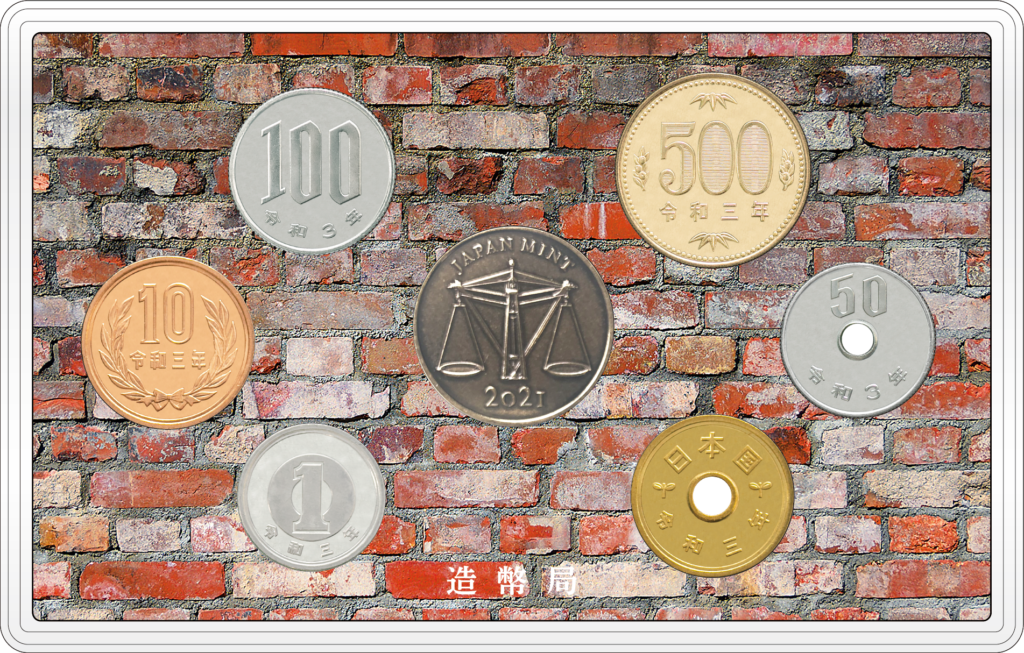
The special paper holder has various pictures such as designs of the coins and photos showing the process of coin production, which enables you to visually learn our 150 year history. Moreover, the coin set has the anniversary logo in print, which was created by the Japan Mint’ designer and chosen by a vote among the staff.
We are confident that coin collectors will enjoy this products.
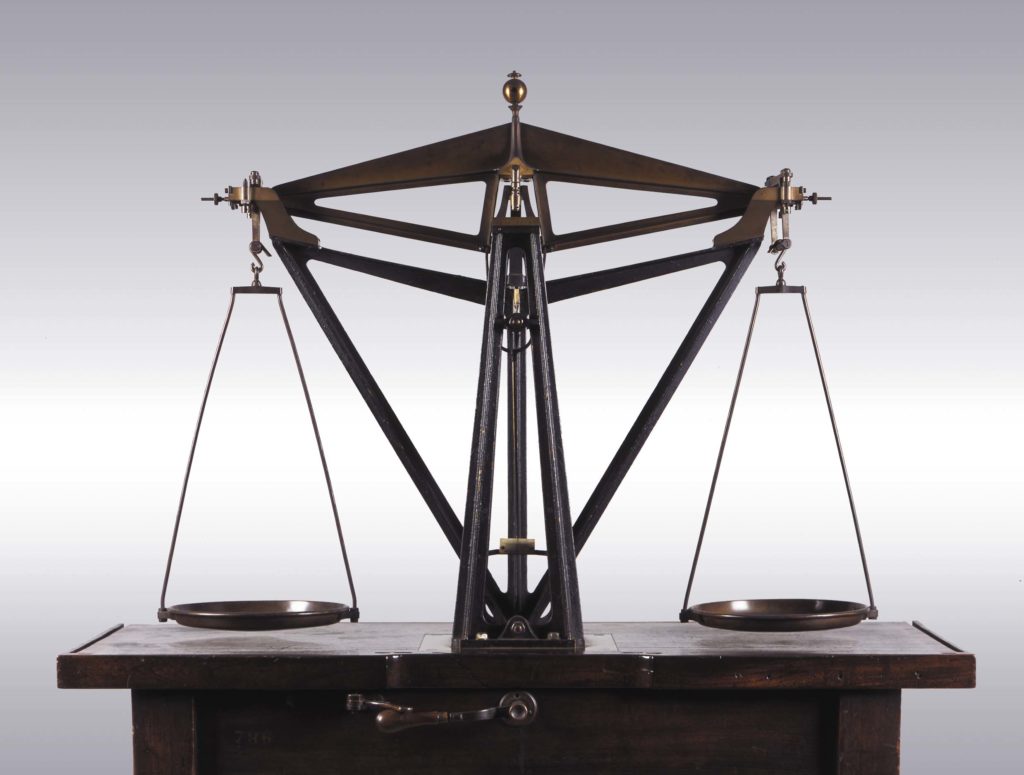
NUMISMAG: Does Japan Mint plans to publish a book (in english?) about history of Japan Mint, for this occasion?
JAPAN MINT: Books about our history have been edited and published by the Japan Mint on the occasion of the milestones, for example the 100th and 125th anniversaries. Likewise, since 2021 marks our 150th anniversary, we are now working on writing and editing a book about the organized history over 150 years. It will be published from next year onward and written in Japanese only.
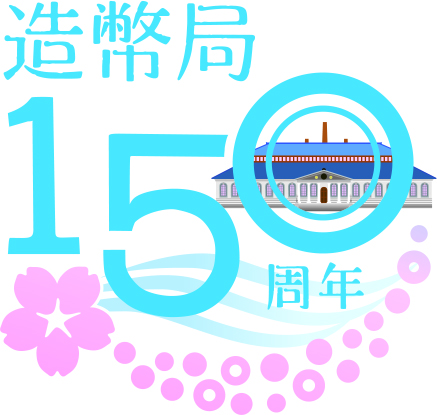
Sources: Japan Mint and NUMISMAG.
